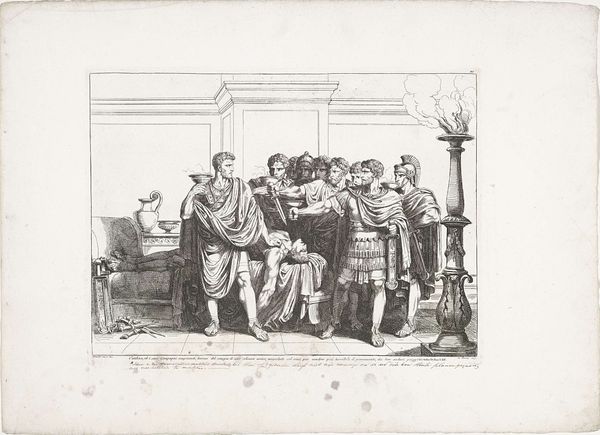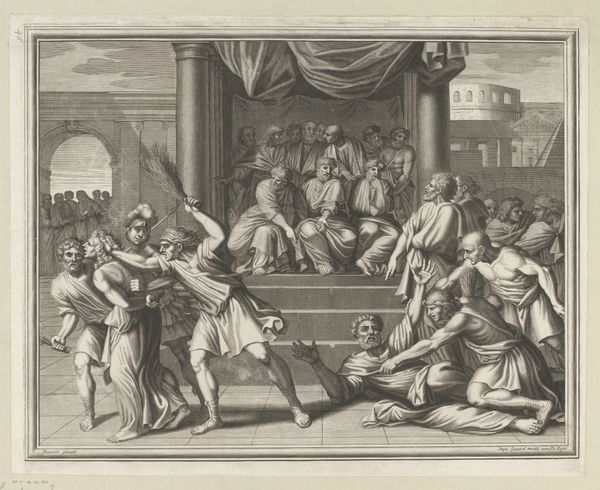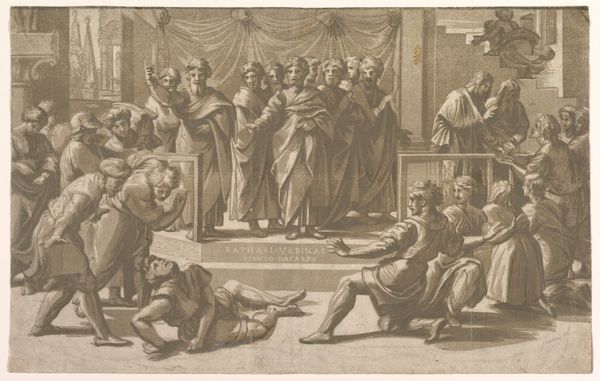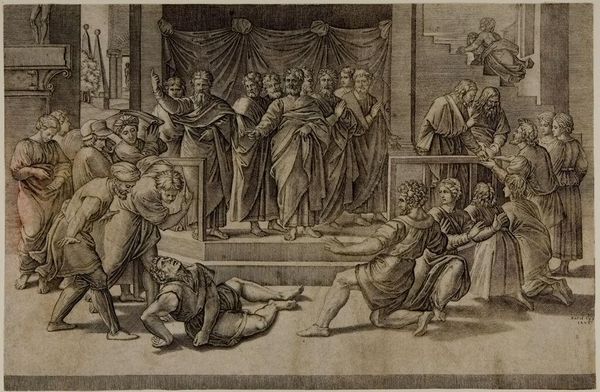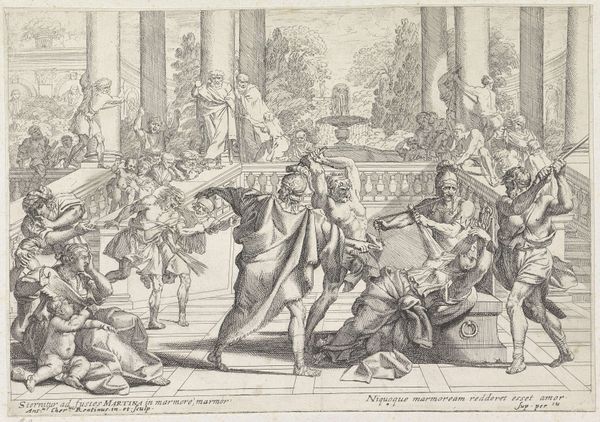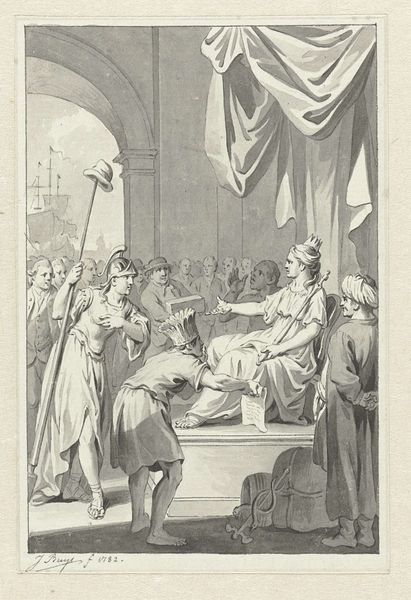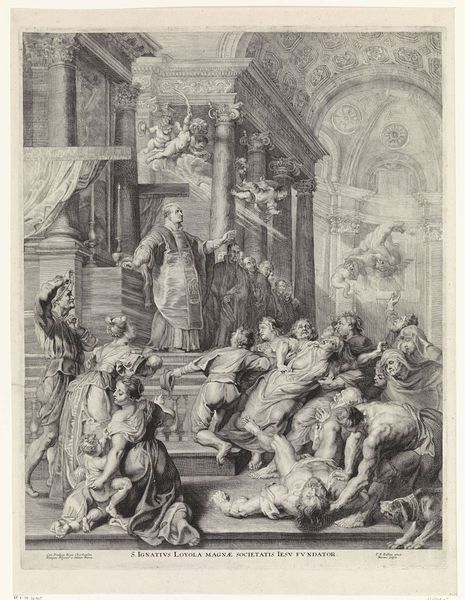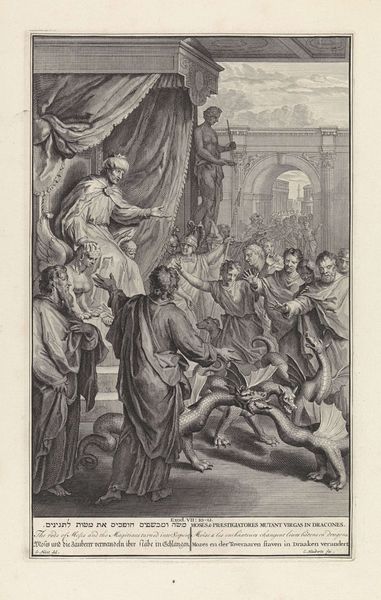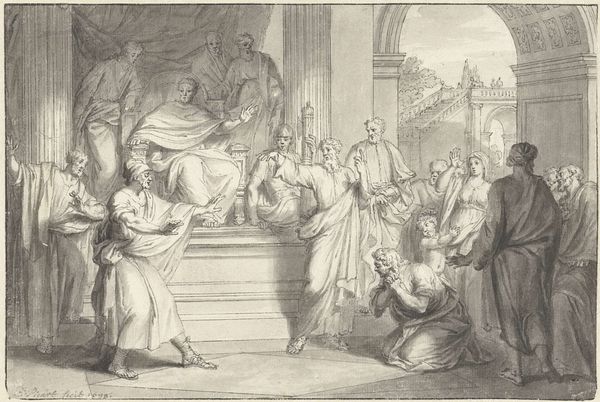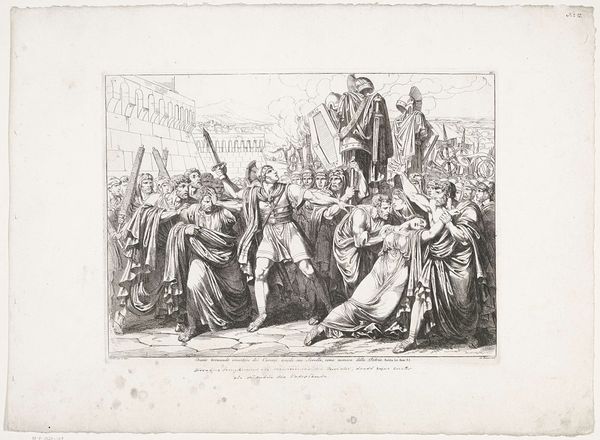
print, engraving
#
narrative-art
# print
#
figuration
#
romanesque
#
line
#
history-painting
#
engraving
#
monochrome
Dimensions: height 314 mm, width 425 mm
Copyright: Rijks Museum: Open Domain
Editor: We’re looking at Bartolomeo Pinelli's 1819 engraving, "The Murder of Cicero." The stark black and white creates such a dramatic effect, and you really feel the weight of the event being depicted. What stands out to you as you consider this image? Curator: It’s compelling how Pinelli uses line work to convey not just the physical details of the scene but the psychological state of the figures. Note the central figure of the assassin, poised with his sword. What emotion do you perceive radiating from him, as opposed to the mourning figures? Editor: I see determination in the assassin, but a real sense of despair in the others. It's like their world is collapsing. Curator: Precisely. And isn't it intriguing how Cicero is almost framed, both within the litter and by the looming architecture behind? Think about Cicero as a symbol of Roman intellectualism and republican ideals. The act isn't just the death of a man, is it? Editor: No, it feels symbolic of the death of an era. The visual weight of the architecture does box him in. It makes me wonder if the artist meant to capture a sense of inevitability. Curator: An astute observation. Consider also the cultural memory of Cicero, a powerful orator and philosopher. How might this image serve to perpetuate or even reshape that memory? The sharp lines of the engraving lend themselves to a powerful, unwavering narrative, don't they? Editor: Yes, seeing how the formal elements work with the historical subject makes the piece feel so much richer. It’s not just a depiction of a murder, it’s about the legacy of the event. Curator: Indeed. Images like these are potent reminders of how art carries within it layers of meaning and lasting impact.
Comments
No comments
Be the first to comment and join the conversation on the ultimate creative platform.

